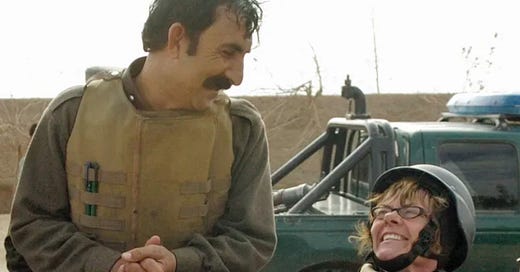It’ll take more than bureaucratic billions to pull Canada’s military out of its death spiral
Our soldiers have stories, but since Christie Blatchford left us, no one in our media is interested in telling them
When Prime Minister Mark Carney made his military spending announcement last week, I found myself thinking again about the late Christie Blatchford and wishing she were still with us.
No journalist covered the Canadian military like Blatchford. With her characteristic blend of acerbic wit and puppy dog affection, Blatchford regularly championed the largely invisible and misunderstood soldiers who have kept the Canadian armed forces (CAF) limping along since the end of World War II. Blatchford loved soldiers almost as much as Don Cherry does and her heart bled through the end of her pen onto the broadsheet.
One of Blatchford’s final columns, before her Nov. 2019 fatal cancer diagnosis, came during a federal election campaign that, she opined, offered nothing for the Canadian citizens who happened to be serving in the military.
“Soldiers don’t vote in a bloc,” she wrote, “…but even if they did, who on earth would they support, when most of the parties barely acknowledge them or in the main (there are a few exceptions) even understand what it is that they do.”
Which brings me back to Carney and his June 9 declaration that the “new” government would immediately invest $9 billion to reach the 2014 NATO target of 2 per cent of GDP dedicated to military spending.
Carney made the announcement, declaring that this 11 years late investment came five years ahead of schedule - a theme dutifully repeated by media - at the Munk School of International Affairs at the University of Toronto. With a backdrop of an enormous Maple Leaf and lines of military personnel wearing operational dress uniform, Elbows Up Carney somberly declared, “it is time for Canada to chart its own path and assert itself on the international stage.”
In response to the new-world-order of rampant and frightening nationalism, Carney has instructed Canadians they need to get more nationalistic. During the election he told us to “buy Canadian;” now he says it is time to buy a Canadian military.
A closer look at the new plan, “rebuilding, rearming, and reinvesting,” shows that one of the stated objectives of the new money (which an article in the Financial Post tells us will worsen the deficit to roughly $65 billion this fiscal year) is to “allow Canada to become increasingly self-sufficient in fulfilling its responsibility to defend its territory and citizens.”
This claim is laughable. Plenty of pundits have spelled out the fact that the “Canadian military’s troubles are deeper than insufficient funds.”
Carney does not strike one as the kind of man who has ever been close enough to a Canadian soldier to detect the remotest whiff of the trench foot pong wafting from the bootless military, but there is a deep and troubling crisis of culture in the Canadian military that the political class and media is ignoring.
Last year, former defence minister Bill Blair used the phrase “death spiral” to refer to the recruitment and retention crisis.
“Over the past three years, more people have left than have entered. That is, frankly, a death spiral for the Canadian Armed Forces,” Blair told the Ottawa Conference on Security and Defence in March 2024.
If she were alive today Blatchford would have been all over the stories emerging from the CAF.
Former infantry officer Dave Morrow could have wished that Blatchford had been around in 2021, in advance of the US pull-out, when hundreds of Afghan civilians who had worked with the Canadian military were largely abandoned to suffer their fate at the hands of the Taliban.
Morrow, a fifteen-year veteran of the Canadian forces who deployed on several missions, was contacted in 2021 by his former Afghan interpreter Abdul who was desperate for help in getting him and his family out of the country. Morrow found himself the face of a group of veterans who mobilized to apply pressure on government officials to assist those civilians escape Afghanistan.
In an interview with Rosemary Barton, Morrow said, "in my opinion, Abdul … was a member of [the] Canadian Armed Forces. He wore a uniform, he was paid by us, he conducted operations like us, and it would be the equivalent of leaving myself or one of my platoon mates in Afghanistan and saying, 'Sorry, you need to find your own way out.'"
The entire experience, including that with the press, left Morrow disillusioned. Abdul ending up relocating to England because of Canadian bureaucratic obstacles.
I’ll be offering readers the full interview I did with Morrow, but when I asked about the most recent funding announcements, he told me: “I’ll believe it when I see it. I bet a lot of that funding will go to the bloated headquarters, which means they’re going to blow it on bureaucracy not lethality.”
In this context, ‘lethality’ means the ability to defeat the enemy: more ammo, better equipment and training. In Canada, and other Western militaries, the trend is of huge bureaucracies. More money brings in people with higher salaries and more opinions and special projects.
Morrow says, “we have massive lawsuits against the CAF and serious issues that need journalists to be all over, but they only report on sex assault to serve a political narrative. It’s also a function of Canadians not giving a shit either.”
I asked whether there is anyone in the media who gives a shit.
“Since Blatchford, there’s nobody.”
(Anna Farrow is a Montreal-based freelance writer)





I would suggest that in the media, Matt Gurney still gives a shit...
Matt Gurney says hello. He definitely GAS.